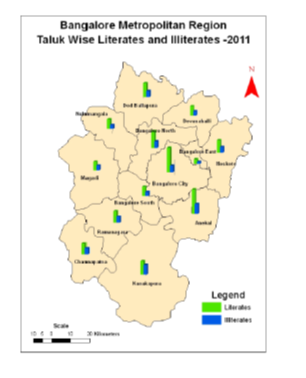
Geo-Eye
Department of Geography & GIS

Department of Geography & GIS

Geo-Eye
Year: 2019, Volume: 8, Issue: 1, Pages: 25-27
Original Article
Srinivas1
1Assistant Professor, Department of Geography, G.F.G.C, Vijayanagara, Bangalore, Karnataka, India
Received Date:12 February 2019, Accepted Date:24 April 2019
The study of human resource is of vital importance both from the point of view of economic development and social welfare. It is particularly important because human beings are not only instrument of production but are also ends in themselves. It is necessary to know quantitative terms, the number of people living in a region at a particular time, the rate at which the number is growing and the composition and distribution of population. Sustainable development involves conservation of land and water resources. With the increasing pressure of the ever growing human population, increased living standard and the concomitant activities are exerting tremendous pressure on the finite natural resources. The uneven distribution of population needs the proper adjustment of exiting things through the spatial planning only raises the standard of living of the population. So the population planning is the main element with reference to which other resources are planned (Singh 1968). In view of these demographic dimension and human resource to examine the spatial pattern of population in the study area for water management. The main aim of this study is to know literacy rate in Karnataka. In the present study an attempt is made to know the demographic pattern. The present study know literacy of the study unit. Date collected from the Census of Karnataka. According the 2001 census there were 5853892 literates out of which 3289021 males and 2564871 females in the city. According the 2011 census there were 8875783 literates out of which 4841813 males and 4033970 females in the city.
Keywords: Agriculture; Production; Productivity
© 2019 Srinivas. This is an open-access article distributed under the terms of the Creative Commons Attribution License, which permits unrestricted use, distribution, and reproduction in any medium, provided the original author and source are credited.
Published By Bangalore University, Bengaluru, Karnataka
Subscribe now for latest articles and news.